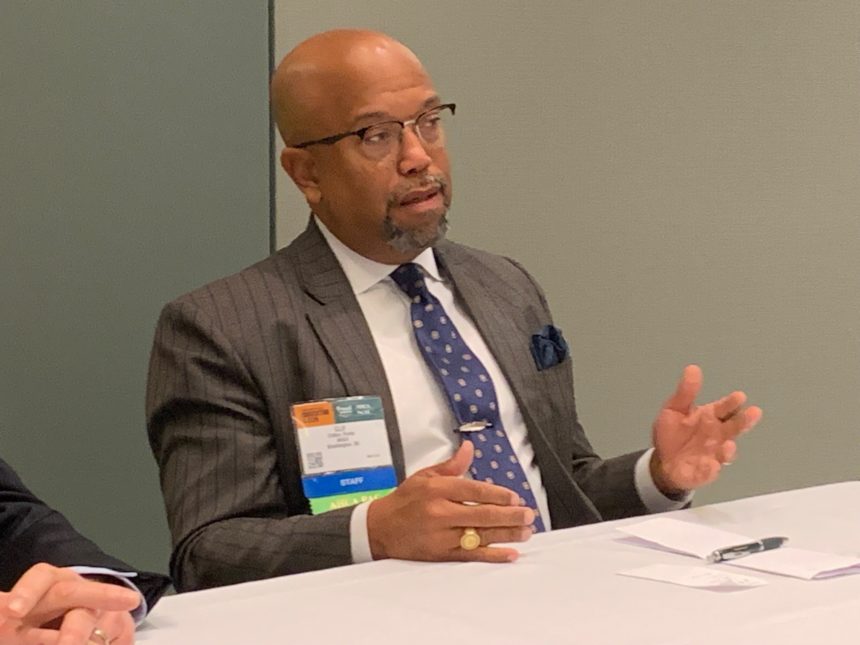
Add the two largest US nursing home associations to the chorus criticizing the US State Department’s cap on new employment-based visa petition filings.
Only green card petitions for international nurses filed before June 2022 may proceed to the interview stage for EB-3 visas, federal officials have announced. All other petitioners currently waiting for an interview are paused, likely until 2025 some immigration experts warn.
Although the visas are valid for a variety of professions, the timing of the visa freeze couldn’t be worse for long-term care, which lost more nurses than any other healthcare sector and remains the lone segment that hasn’t returned to prepandemic staffing levels.
“When we create backlogs for international nurses to come to the U.S., we create backlogs for seniors to access the long-term care they need,” said Clif Porter (pictured), senior vice president of government relations for the American Health Care Association/ National Center for Assisted Living, in a statement Wednesday. “At a time when the administration plans to propose a federal staffing mandate for nursing homes, Washington should not simultaneously create barriers to recruit the nurses we so urgently need.”
The U.S. Department of State’s Bureau of Consular Affairs quietly announced the EB-3 limiting action in its May bulletin last week. The visas are especially popular with technology workers, but nurses use a significant number of them as well.
The notice said the application limits were announced because demand for EB-3 green cards hit its 40,000 annual limit for the fiscal year.
The State Department notice is required by a 1990 law that both sets the caps and sets the processes the Executive Branch must follow as the number of visa applications approaches the caps, noted LeadingAge in a notice to its members.
“To freeze the ability for foreign-born nurses to immigrate to the U.S. using the EB-3 visa eliminates a valuable option for bringing more qualified workers into the aging services sector,” said Ruth Katz, LeadingAge’s senior vice president for policy, in a story Tuesday in The Hill. “This visa retrogression shuts off one meaningful workforce solution, and, ultimately, harms older adults and families who cannot access needed care and services. Without staff, there is no care.”
About 1 in 5 nurses currently working in the US are immigrants, estimates the American Association of International Healthcare Recruitment. Some 5,000 are currently awaiting visa processing. Numerous long-term care providers have pursued foreign nurse recruitment in a bid to replenish their ranks.
Registered nurses account for about 9% of the nursing home workforce, according to AHCA, the nation’s largest nursing home association. It is calling for reintroduction and passage of the Healthcare Workforce Resilience Act. The measure was first unveiled during the last Congress and would have recaptured unused visas from previous fiscal years for nurses and their families. AHCA also has called on lawmakers to “create and accelerate” a temporary visa option for more registered nurses and other healthcare workers.
“We need Congress to expand and expedite opportunities for caregivers who wish to live and work in the United States, especially those who are willing to care for our nation’s seniors,” Porter said. “Immigrants make up a vital part of our workforce and are critical to helping us address this historic labor crisis.”




